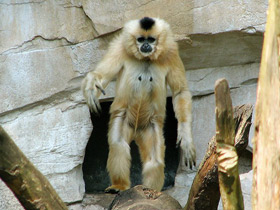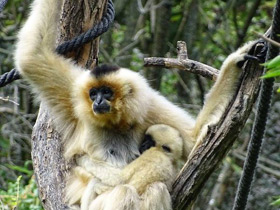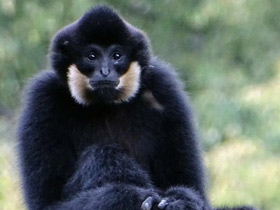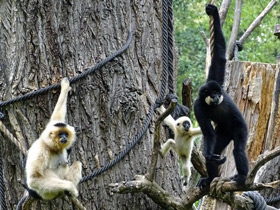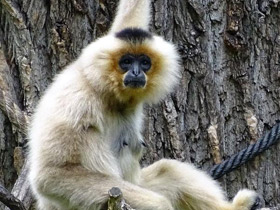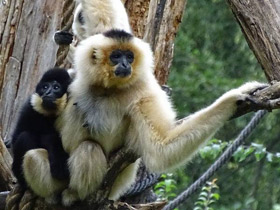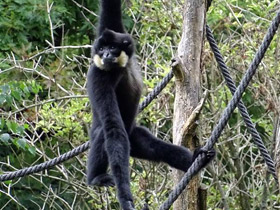The yellow-cheeked gibbon, golden-cheeked gibbon, the yellow-cheeked crested gibbon, the golden-cheeked crested gibbon, the red-cheeked gibbon, or the buffed-cheeked gibbon (Nomascus gabriellae)
Yellow-cheeked gibbon видео
The yellow-cheeked gibbon (Nomascus gabriellae), also called the golden-cheeked gibbon, the yellow-cheeked crested gibbon, the golden-cheeked crested gibbon, the red-cheeked gibbon, or the buffed-cheeked gibbon, is a species of gibbon native to Vietnam, Laos, and Cambodia. The species was discovered and named after the British naturalist Gabrielle Maud Vassal.
Particularities
Nomascus gabriellae is a species of hominoid primate of the family Hylobatidae. Previously, all modern species of Nomascus gabriellae were classified as part of the species Hylobates concolor, which was placed in the subgenus Nomascus within the genus Hylobates. Nomascus gabriellae was considered a subspecies of Hylobates concolor gabriellae. However, morphological and behavioural differences allowed it to be elevated to species rank, and Hylobates was split into several separate genera, including Nomascus.
Appearance
Nomascus gabriellae hatchlings are born white and darken with age. Males remain black for life, and females become lighter during puberty; only the crown remains black. Males have light markings on the cheeks. Adult females are yellowish brown, the chest coat is greyish and the crotch coat is reddish brown. Females are slightly smaller than males.
Behaviour and nutrition
Nomascus gabriellae live in small family groups consisting of a monogamous pair and their young. Each group defends its own territory. Gibbons spend most of their time in trees, moving by brachiation. They are active during the day.
In captivity, Nomascus gabriellae are quite selective in their diet. Their diet consists mainly of fruits, but occasionally they also eat shoots and leaves, flowers and insects. In captivity, Nomascus gabriellae can live up to 50 years, their lifespan in the wild is unknown.
Habitat and abundance
Traditionally, the range of Nomascus gabriellae included northeastern Cambodia (south of Ratanakiri) and southern Vietnam (Batma National Park). To the north, the range extends into Laos and central Vietnam. During a field survey in 2005 in the Seim Protected Area in Cambodia, researchers counted 2,500 individuals of this species, much higher than previous estimates. However, Nomascus gabriellae is listed as endangered on the IUCN Red List. In 2008, the population was estimated to have declined by 50% in 45 years (3 generations), mainly due to hunting and habitat destruction.

















